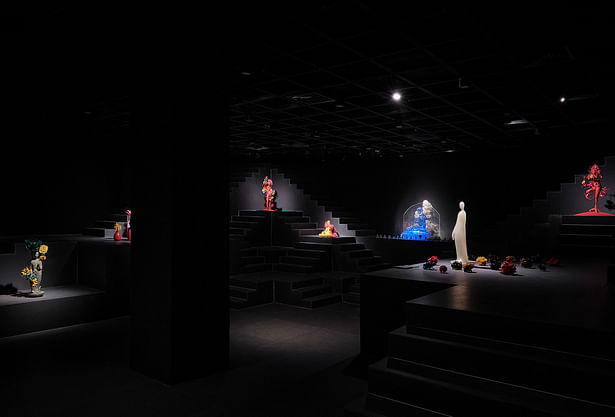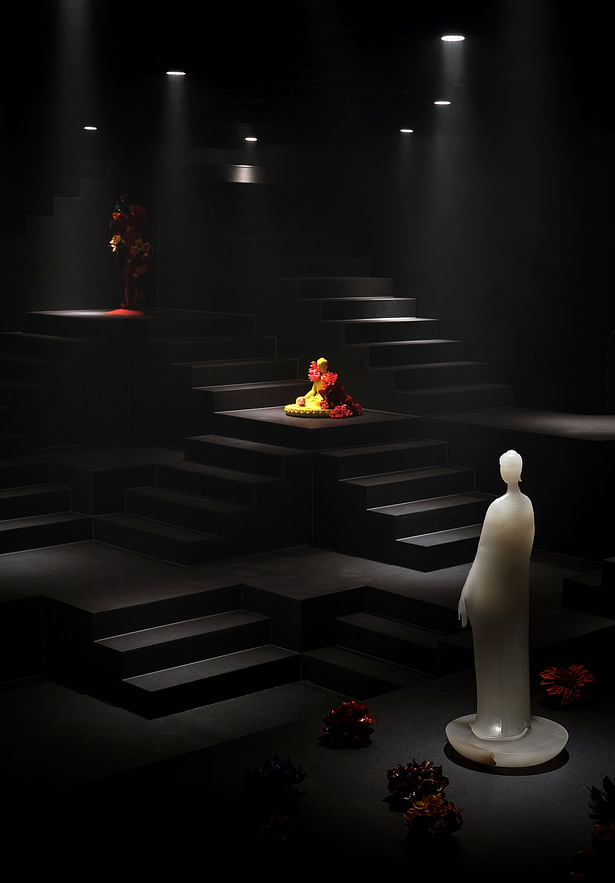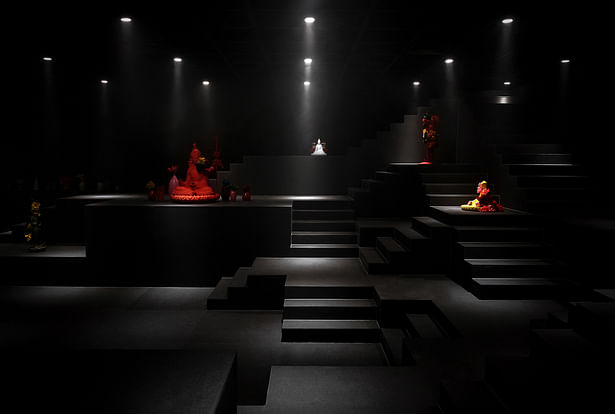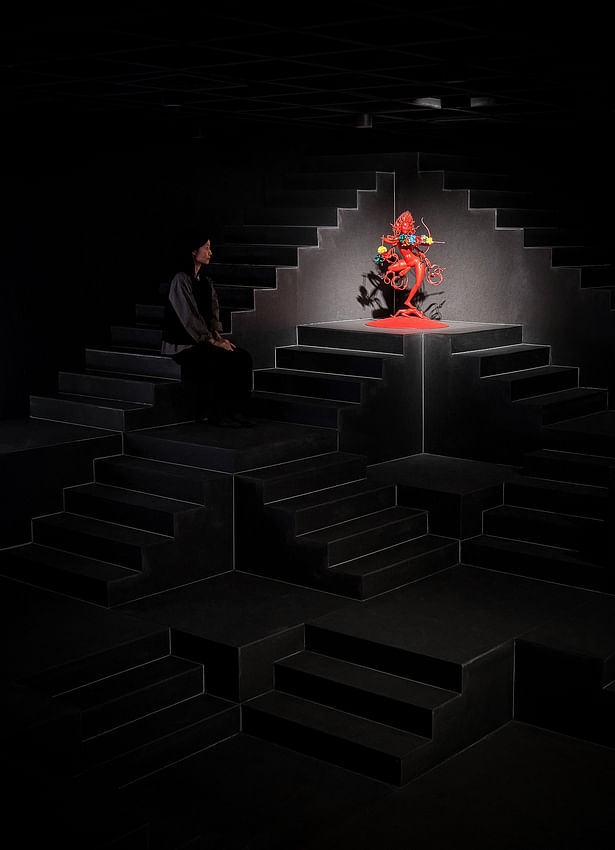
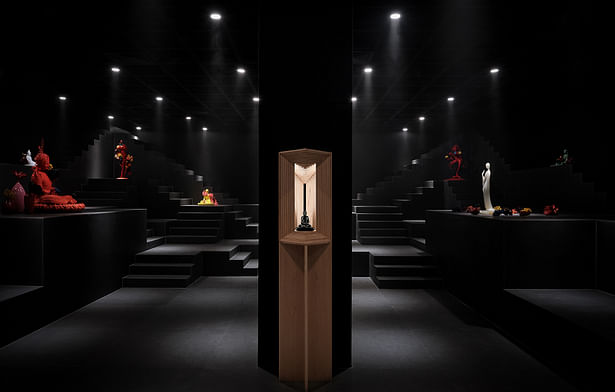
At the end of 2019, we were commissioned by the JIANGJIABAN to travel to Beijing for a preliminary site visit for their new exhibition "VOID". The site of the exhibition is the "Black Box Theater", a small theater on the first floor of The Dome Studio in Chaoyang District, Beijing. It is located in a creative park adjacent to the Olympic Forest Park.
As the third collaboration between TEAM_BLDG and Jiang Sheng, the "VOID" is also a turning point for Jiang Sheng in his creative and spiritual journey. This room was named "VOID" but was “overflowed” with numerous elements. For example, Jiang Sheng adopted a lot of solid and highly saturated materials in "VOID", instead of the crystal class glass material that he consistently used for his work.
"Theatre Space" At The End of The Corridor
After entering from the north gate of the The Demo Studio, we first came to the joyful open space of The Demo Café. After passing through the theater door facing the cafe, we smoothly entered an enclosed interior space with strong theatrical attributes. As soon as we stepped into the theater, we were amazed at the impact and ambivalence of spatial communication and integration.
On the one hand, we hope to maintain the existing montage-like dramatic attributes of the theater, and on the other hand, we also hope to soften the visitor's experience of the exhibition through the setting of the transition space at the entrance. So we decided to set the entrance and exit of the exhibition at the side door of the theater, which was originally for logistical purpose, at the end of a narrow walkway.
132 1m X 1m Cubic Units Stacked in VOID
We have been thinking for a long time about how to create more interaction in between visitors and exhibits in a limited space. Unlike the traditional method of placing exhibits on a specific stand, we hope to design an exhibition space that eliminates the distance between the exhibits and the visitors.
Inspired by the Indian stepwells, we decided to design the space without color attributes and decorative elements. Using simple geometric shapes to create a layered sense of order in the site - a dramatic "empty room" with only undulating topography and air. The matrix platforms consist of 132 1m x 1m cubic units stacked on top of each other. We raised the steps at the end of the space to the height where people almost touch the ceiling, making full use of the height of the space. We did not set any rigid partitions in the space, so that the exhibits can be freely placed on the platforms. The visitors are guided "flexibly" through the light and shade of the lights and the placed Buddha statues. When the visitors walk freely on the undulating platforms, the distance between them and the exhibits is sometimes close, sometimes far away, and the exhibits is sometimes at eye level, sometimes on the high ground. So, what really determines the route of the exhibition would be various preferences of different visitors.
As the exhibition curator Wen Qing commented: “The 'VOID' exhibition space designed by TEAM_BLDG is like a circular staircase without beginning and end. Designer Xiao Lei perfectly utilized the height of the space to build the site in a staggered manner, providing the viewers with a variety of viewing angles: sometimes the Buddha statue is in the high place; sometimes in the low place; sometimes at the eye level. In the “void” exhibition space, people are the viewers and also the view, so to speak, 'being in it and not knowing what it is, leaping out the picture and being enlightened'."
Some Objects
In addition, we have designed two kinds of altars for the Buddha statues in the exhibition, in order to add some warmth to the statues that is solemn and unapproachable in people's stereotypes. And make it closer to the concept of " Common, peaceful, ancient yet still intimated. Following the design language of the exhibition, we have functionally integrated the Buddhist altar with the floor lamps commonly found in homes. While adding a sense of solemnity and ritual to the statue, it also enhances the connection among the space, the people and things in it, both tangible and intangible.
The large-scale floral installation in the exhibition space was created by the artist's friend: Ian Hylton. Being inspired by Tibetan Buddhists, who use plastic flowers to worship the Buddhas because of their poor access to supplies. Ian re-examined the materials he normally ignores and gave them a new beauty after being artificially sculpted.
Status: Built
Location: Beijing, CN
Firm Role: Architects
Additional Credits: Function: Exhibition
Design period: 2020.04-2020.10
Construction period: 2020.11
Location: Chaoyang, Beijing, China
Area: 180SQM
Architects: Xiao Lei, Shi Jiaxin, Shigeno Yuji
Type: Interior
Status: Completed
Photographer: Jonathan Leijonhufvud
